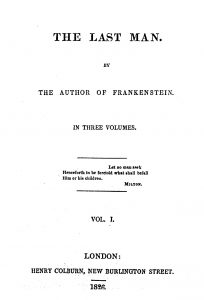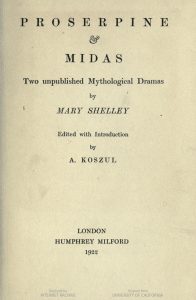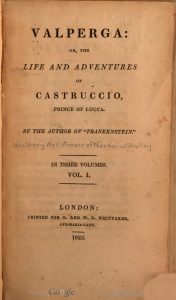Undecided on what to read next? Stuck in a reading slump? We can help! Here are some recommendations you can find in the library catalog:
Mexican Gothic, by Silvia Moreno-Garcia
If you’re looking for a book to keep you up at night, Mexican Gothic is the perfect choice. When Noemí receives a worrying letter from her cousin, she travels to High Place, where Catalina lives with her husband and his strange family, the Doyles. When strange dreams and happenings begin to plague her, Noemí suspects there is more to High Place than meets the eye. Mexican Gothic is an eerie, gothic tale of horror that will leave you thoroughly spooked.
Dear Edward by Ann Napolitano
When Edward boards a plane to Los Angeles with his family, the last thing he expects is for it to crash–and to leave him as the only survivor. He goes to live with his aunt and uncle, where, over the course of many years, he tries to find his place and purpose in the world. A haunting coming-of-age story, Dear Edward is a breathtaking tale that will leave you thinking about it for days to come.
The Stationery Shop by Marjan Kamali
The year is 1953. Roya loves the stationery shop owned by Mr. Fakhri. It’s her oasis in Tehran, a place she can feel safe. When she’s set up by self-proclaimed matchmaker Mr. Fakhri, a beautiful romance blooms between her and another customer, Bahman. On the day before they’re to be married, they agree to meet in the town square, though due to a coup, they are unable to meet. After attempts to contact Bahman fail, Roya moves on with her life, but years later, fate brings Roya and Bahman together again. And this time, Roya is determined to know what happened all those years ago. If you like literary fiction with a slice of romance, The Stationery Shop is a perfect choice.
The Secret History by Donna Tartt
Maybe you’re interested in the dark side of academia. If so, The Secret History is a great choice. When Richard leaves his hometown to attend Hampden College, he finds himself introduced to an elite group of Classics scholars, led by the enigmatic Julian Morrow. Soon, though, he finds himself embroiled in a plot to murder one of their own: a fellow student, Bunny. Told through flashbacks leading up to Bunny’s death, The Secret History is a chilling work of fiction deserving of its bestseller status.
Djinn Patrol on the Purple Line by Deepa Anappara
Nine-year-old Jai considers himself to be one of the smartest kids at his school. So when one of his classmates goes missing, he’s determined to find him, believing the crime-solving skills he’s picked up from watching too much television will help solve the case. But when more children begin to go missing and the police force remains indifferent, Jai and his friends must confront a terrifying reality. Based on real disappearances occurring in metropolitan India, Djinn Patrol on the Purple Line is an emotional thriller sure to keep you on the edge of your seat.





















































